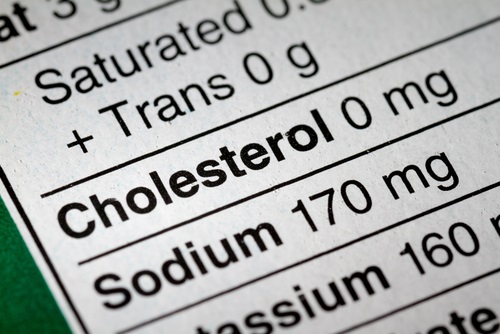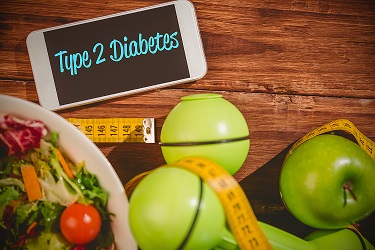
The Keys to Health: Food Labels
Read this post to understand how to read food labels and the tricks marketers play with our food.
To view the full article please register below:
The Keys to Health: Food Labels
Since we are what we eat, wouldn’t it make sense to read the food labels of the packaged foods we consume? On the back of the package are not only the nutrition facts, but also the ingredients. Ingredients are listed from the most to least abundant by volume. The fewer the ingredients, the less processed and preserved it is. Another rule of thumb is your ability to recognize or even pronounce the ingredients. Real food is clean and straightforward, not a science experiment.
The focus of this article though is the tricky and sometimes misleading terminology that the food industry uses to convince you that a product is safe and potentially healthy for you. Here is a list of the most common buzz words that producers and marketers use on food packaging.
All natural
Don’t be fooled; all natural doesn’t mean all that much. The Food and Drug Administration (FDA) doesn’t define it, although food makers won’t get in trouble as long as the so-labeled food doesn’t contain added colors, artificial flavors or “synthetic substances.”
That means there’s room for interpretation.
As such, a food labeled natural may contain preservatives or be injected with sodium, in the case of raw chicken. Some natural products will have high fructose corn syrup and companies will argue that since it comes from corn, it’s healthy—but it’s not. 1,4,7,8
Multigrain
When shopping for healthy bread and crackers, look for the words whole grain or 100 percent whole wheat. It’s not enough if it says multigrain or made with whole grain.
Whole grains—which include popcorn, brown rice and oatmeal—have more fiber and other nutrients than those that have been refined, a process that strips away the healthiest portions of the grain.
And don’t go by color alone! Some darker breads or crackers have caramel coloring and are no healthier than highly-refined white bread. For a list of ingredient to keep on your radar, check out the chart on The Whole Grain Council Web site. 2,3,7
No sugar added
If you’re concerned about calories and carbs, maybe because you have diabetes or are trying to prevent it, you may toss no sugar added products in your grocery cart.5
But foods, including fruit, milk, cereals and vegetables naturally contain sugar. So although these products may not have added sugar, they still may contain natural sugars. And no sugar added products still may contain added ingredients like maltodextrin, a carbohydrate.
Carbohydrates—which can be simple sugars or more complex starches—raise blood sugar, and no sugar added doesn’t mean a product is calorie- or carbohydrate-free.
Sugar free
Sugar free doesn’t mean a product has fewer calories than the regular version; it may have more, although food makers are supposed to tell you if a product isn’t low-cal. Sugar-free products have less than 0.5 grams of sugars per serving, but they still contain calories and carbohydrates from other sources.6
These products often contain sugar alcohols, which are lower in calories (roughly 2 calories per gram, compared to 4 per gram for sugar), but compare labels to see if the sugar-free version is any better than the regular version. Common sugar alcohols are mannitol, xylitol, or sorbitol.
Caution: Sugar alcohols can cause diarrhea, so don’t consume a lot in one sitting.
Zero trans fat
Trans fat is bad for your heart, and the ideal intake is zero. But products that say no trans fat can actually contain less than 0.5 grams per serving. If a product says 0 trans fat on it, it isn’t actually at zero. If you were to have two servings, then you would get a good amount added to your diet. Check for words on the ingredient list such as hydrogenated oils and shortening, which mean trans fat is still present.2
Immunity boosters
Companies can use words like immunity blend or supports the immune system if a product contains certain vitamins, but such words are sometimes used to give an aura of health to a product that may or may not deserve it.
In general, companies must walk a fine line here. If they make medical claims, it can trigger intense scrutiny from the FDA and the Federal Trade Commission (FTC).
In 2008, the company that makes the vitamin product Airborne agreed to settle a $23.3 million class-action lawsuit. The product’s label said it could “boost the immune system” and was marketed as a way to prevent colds without sufficient evidence that it worked.7
Free range/Cage Free
Although a food label may say free range chicken, don’t assume your bird was scampering around outside Farmer Brown’s barn.
Although the U.S. Department of Agriculture (USDA) does define the words free range, there are no requirements for the amount, duration and quality of outdoor access.
What it’s supposed to mean is that they are out running in a field, but what it really means is they just have exposure to the outdoors.8
Fat free
This is a notoriously misleading label. When promoting the dangers of saturated and trans fat became all the rage, the market was flooded with products that touted their fat-free status. The problem? They sometimes contained nearly as many calories as full-fat versions.
Just because it says it’s fat-free, doesn’t mean you get a free ride. Packages could say it’s fat-free, but be loaded with sugar, and sugar-free products could be loaded with fat.
Check the label for calorie content, and compare it to the full-fat version.6
Light
A food label may say a product, such as olive oil, is light, but manufacturers have been known to use the term to refer to the flavor rather than the ingredients.
The flavor might be lighter, but you aren’t saving one calorie. The wording on light products can be confusing, but it is important to read the nutritional facts.
To be considered a light product, the fat content has to be 50 percent less than the amount found in comparable products.6
Gluten free
Gluten is a protein found in grains like wheat or rye, and it can wreak havoc on the health of those with celiac disease or gluten intolerance.
Gluten-free products are becoming easier to find, which is great for those with gluten intolerance. For everyone else though, there’s no advantage to buying them. In fact, gluten-free whole grains may have less fiber than the regular version.
Unless you have metabolic problems, gluten-free products don’t help you lose weight and are not necessarily good for you, but because it’s a buzz word, it’s put on packages.9
Made with real fruit
Products that claim to be made with real fruit may not contain very much at all, or none of the type pictured on the box.
While companies must list the amount of nutrients they contain, such as fat and cholesterol, they do not have to disclose the percentage of ingredients, such as fruits and whole grain, according to the Center for Science in the Public Interest (CSPI).7
Lightly sweetened
Although the FDA has definitions for terms like reduced sugar, no added sugar and sugar-free, companies sometimes come up with marketing lingo that is, well, just made up.
One of those terms is lightly sweetened, which isn’t defined by the FDA.
“Whether Kellogg’s Frosted Mini-Wheats Bite Size is ‘lightly sweetened’ should be determined by federal rules, not the marketing executives of a manufacturer,” stated a CSPI report from 2010.7
Cholesterol free
Cholesterol free doesn’t mean, literally, no cholesterol. Cholesterol-free products must contain less than 2 mg per serving, while low-cholesterol products contain 20 mg or less per serving. Foods that say reduced or less cholesterol need to have at least 25 percent less than comparable products.
Cholesterol is made by the liver, so only animal products like meat, dairy, eggs and butter can contain it. If a plant-based product (such as corn oil) touts its cholesterol-free status, there’s no benefit compared to other vegetable oils, which also don’t contain it.6
Organic
While organic was once a bit like the term all natural—open to interpretation—that’s no longer true. If a product has a USDA label that says organic, 95 percent or more of the ingredients must have been grown or processed without synthetic fertilizers or pesticides, among other standards.
A label that says made with organic ingredients must have a minimum of 70 percent of ingredients that meet the standard.
Keep in mind that organic is not synonymous with healthy. In fact, it may be anything but. Organic food can still be packed in fat, calories and sugar. Companies like to add magnetic words on products to make you think it’s healthy.1,10
Two percent milk
Two percent milk sounds great—it’s such a low number! What most people don’t realize is that whole milk contains only 3.25 percent fat.
So 2 percent milk contains less fat than regular milk, but not that much. It isn’t technically considered low fat; only 1 percent milk and fat-free—also called skim milk, which has less than 0.5 percent fat—meet that standard.
Omega-3 fatty acids
Omega-3 fatty acids come in three main types: Eicosapentaenoic (EPA), docosahexaenoic (DHA) and a type called alpha-linolenic acid (ALA), which doesn’t have the proven benefit for the heart as EPA and DHA.
Some foods, such as flax seeds, are higher in ALA than EPA and DHA. Eggs may contain omega-3 if chickens are fed flax seed or fish oil.
If you are looking for a good helping of omega-3, stick to fish and seaweed products. Products will sprinkle flax on their food just to slap the omega-3 label on the front.
Disclaimer:
All this being said, I highly suggest that you start reading labels and not fall into the trap of blindly accepting a products marketing claims. By doing this you could be inhibiting your goals or possibly contributing to a health condition rather than treating one. I also recommend that you begin to educate yourself further about food label claims and manufacturing practices. Otherwise you just might be putting something “unhealthy” into yourself or the body of someone you love. These are only suggestions based off my experience and almost 20 years in the healthcare field. They are not meant to treat or diagnose any health condition that you might be experiencing.
Sources:
- https://foodandnutrition.org/january-february-2017/decoding-food-label-claims-lowdown-package-promises/
- https://www.consumerreports.org/cro/news/2014/09/5-misleading-food-label-claims/index.htm
- https://www.cbsnews.com/media/7-food-label-claims-that-are-meaningless/4/
- https://www.cbsnews.com/media/7-food-label-claims-that-are-meaningless/8/
- https://globalnews.ca/news/3827073/food-labels-that-claim-no-added-sugar-can-be-deceiving-canadian-study-says/
- https://www.myfooddiary.com/Resources/label_claims.asp
- https://well.blogs.nytimes.com/2010/01/28/six-meaningless-claims-on-food-labels/
- https://www.rodalesorganiclife.com/food/food-claims?slide=1
- http://drhyman.com/blog/2017/01/19/heres-gluten-free-diet-can-become-incredibly-unhealthy/
- https://www.rodalesorganiclife.com/food/can-you-trust-organic-label












